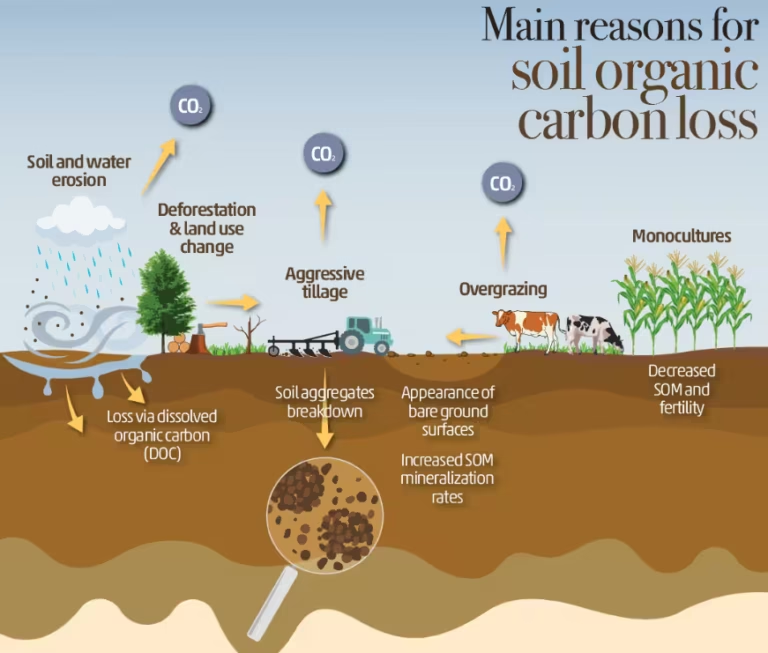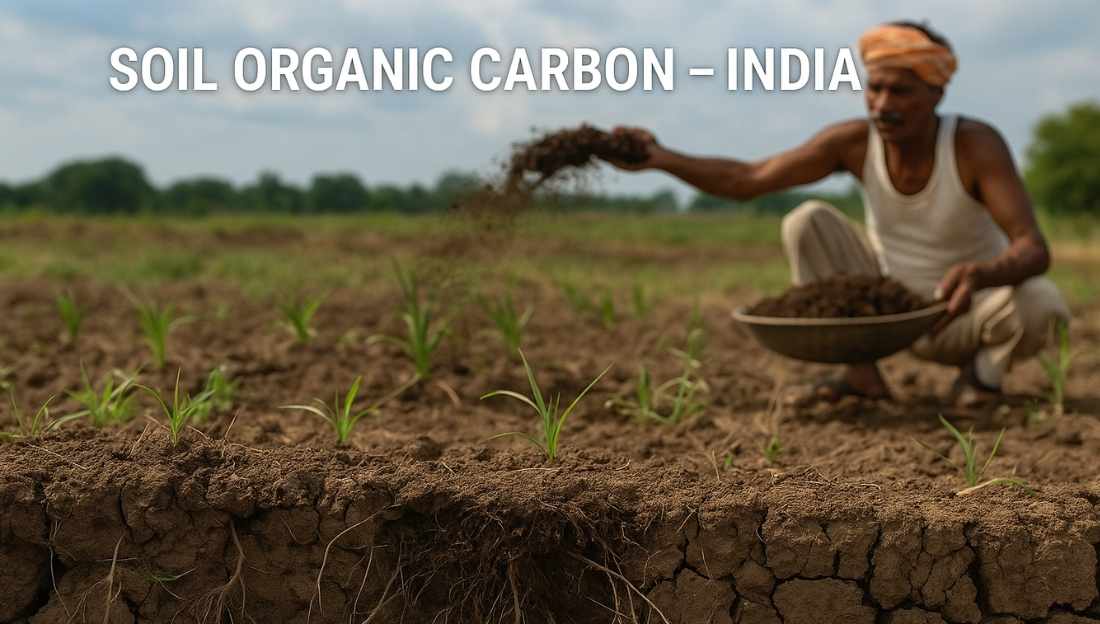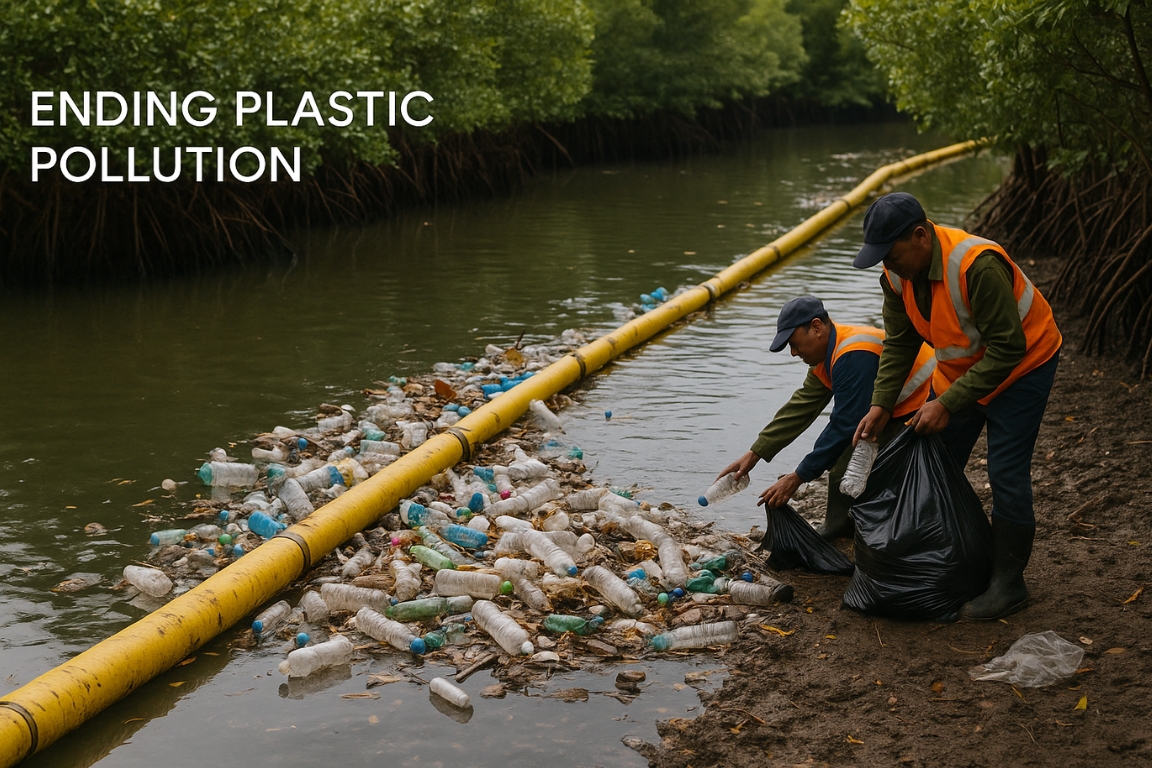A recent ICAR (Indian Council of Agricultural Research) study has found that climate change and imbalanced use of fertilizers are leading to a decline in soil organic carbon (SOC) levels across India, especially in arable farmlands. The findings are based on 2.54 lakh soil samples taken from 620 districts across 29 States.
Soil Organic Carbon (SOC) Decline in India: Key Findings of ICAR Study
1. Background of the Study
- Conducted by scientists from ICAR–Indian Institute of Soil Science, Bhopal.
- Considered one of the largest soil sample analyses in the world.
- The study compared SOC levels in both arable (cropped) and non-arable (barren and natural vegetation) lands.
2. Decline in Organic Carbon Levels
- Organic carbon content was found to be significantly lower in arable lands compared to barren or natural lands.
- This is largely due to intensive agriculture, repeated tilling, and removal of crop residue.
- The study indicates that continuous cropping without balanced nutrient replenishment accelerates SOC depletion.

Factors Causing Organic Carbon Loss
1. Imbalanced Fertilizer Application
- Overuse of Urea (Nitrogen) and underuse of Phosphorus (P) and Potassium (K) leads to:
- Soil nutrient imbalance
- Microbial decline
- Loss of soil structure
- States like Haryana, Punjab, and Western Uttar Pradesh showed the highest imbalance due to fertilizer-intensive farming.
2. Climate Change Effects
- Rising temperatures accelerate decomposition of organic matter.
- Changes in rainfall patterns affect soil moisture and microbial activity.
- Semi-arid regions like Rajasthan and Telangana show particularly low SOC due to high temperatures and low rainfall.
3. Land Use Change
- Conversion of natural forests and grasslands into croplands reduces carbon input to soil.
- Mechanized farming leads to reduced organic residue return to soil.
What is Soil Organic Carbon?
SOC represents the carbon stored in soil organic matter (plant residues, microorganisms, humus).
It is a key indicator of soil fertility, structure, and water-holding capacity.
Benefits of High SOC
Benefit | Effect |
Better Soil Fertility | Increases nutrient availability |
Improved Water Retention | Enhances drought resilience |
Supports Microbial Life | Maintains soil health and productivity |
Climate Mitigation | Acts as a major carbon sink |
Global Context
- Soils store 2–3 times more carbon than the atmosphere.
- SOC loss contributes to global warming by releasing CO₂.
Links with Government Schemes
Scheme | Relevance |
Soil Health Card Mission | Promotes balanced fertilizer use |
PM–PRANAM (2023) | Incentivizes alternative fertilizer use |
National Mission for Sustainable Agriculture (NMSA) | Promotes climate-resilient farming |
Paramparagat Krishi Vikas Yojana (PKVY) | Encourages organic farming |
Way Forward
- Balanced Nutrient Management
- Promote soil test–based fertilizer use.
- Increase availability of bio-fertilizers and nano-fertilizers.
- Increase Organic Matter Input
- Encourage mulching, composting, and farmyard manure use.
- Reduce crop residue burning; promote in-situ residue management.
- Climate-Resilient Cropping Systems
- Adopt agroforestry, crop rotation, and intercropping.
- Awareness & Incentives
- Farmer training via Krishi Vigyan Kendras (KVKs).
- Incentivize regenerative agriculture practices.
Conclusion
The ICAR study highlights that soil organic carbon loss is both an agricultural and environmental challenge. Climate change, along with imbalanced fertilizer use, is degrading soil health and reducing long-term productivity. Restoring SOC through balanced nutrition, organic amendments, and sustainable farming is essential for securing India’s food systems and climate goals.
This topic is available in detail on our main website.





